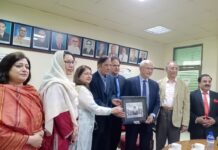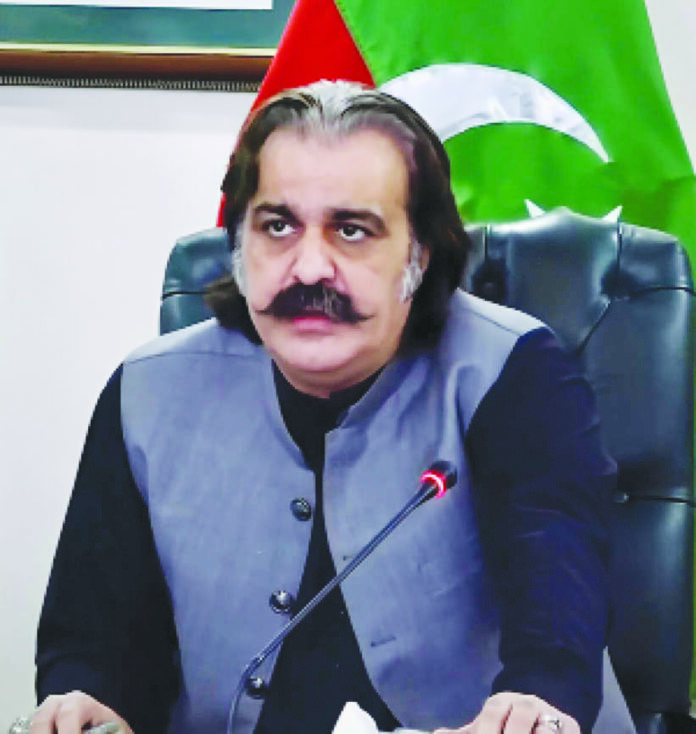AT PENPOINT
KP CM Ali Amin Gandapur has not just come up with a plan for the division of the province, but has gone ahead with its implementation, and appointed an Additional Chief Secretary for the area, with a mandate to develop a separate secretariat.
This seems a version of the PTI experiment with a South Punjab Secretariat during its tenure, even though that could be attributed to an already existing demand for the bifurcation of Punjab, and the creation of a separate Seraiki province. However, it should be noted that there is no sub-provincial separatist movement which has to be satisfied.
It is possible to see two distinct, virtually opposing, strands of linguistic separatism in the areas which have been designated, with Dera Ismail Khan division being home to Seraiki, most akin to the Derawali spoken in Dera Ghazi Khan, and counted as a dialect of Seraiki (assuming Seraiki is considered a separate language, and not a dialect of Punjabi). However, since Pashto is taught in the government schools, Seraiki would be diglossic with Pushtu. The division has been given a substantial monolingually Pushtun population, in the shape of the districts of South Waziristan Upper and South Waziristan Lower, which until recently formed the South Waziristan Agency.
Similarly, while there are some speakers of Kohati, a Hindko sub-dialect, in Kohat, the main city of Kohat division, in addition to the districts of Kohat, Kurram and Hangu (the latter two carved out of the original Kohat district inherited at Partition), the former tribal agencies of Kurram and Orakzai have also been tacked on as districts. Therefore, the division overwhelmingly speaks Pushto.
In the Bannu division, apart from Bannu and Lakki Marwat districts, where some Seraiki is spoken, the purely Pushtun districts of North Waziristand Upper and North Waziristan Lower, have been added.
It should be noted that while some Hindko dialects are included in the new administrative unit, along with the Seraiki of Dera Ismail Khan, the main Hindko-speaking areas, Hazara division, and Peshawar city, have not been included. There is also the question of whether Hindko is a dialect of Punjabi, a sub-dialect of Potohari (a dialect of Punjabi), or a language in its own right.
If it is a dialect of Punjabi it might have some future clumped with Seraiki, but if a separate language, that makes for a trilingual situation in the new unit.
Hindko, Seraiki and Punjabi are similar, but that is because they are all Prakrits, ‘local languages’, which developed out of the overarching ‘Sanskrit’’. Urdu is a Prakrit, being, along with Hindi, the main descendant of Sanskrit itself, though with a greater overlayer of Arabic and Persian vocabulary, and being written in the Arabic script.
Among the other Pakistani languages, Sindhi is also a Prakrit, part of a linguistic continuum that extends all the way across the Indo-Gangetic plain, down to Bengal. However, Pushro and Balochi are not Prakrits, but Indo-Iranian languages, cognate to Persian. Therefore, the new administrative unit may be linguistically explosive, in that it might provoke a subnational separatist movement similar to that in the Punjab for a Seraiki province, which was on offer in the shape of the South Punjab secretariat.
Actually, the Seraiki province in Punjab is handicapped by being a movement where a large number actually call for two provinces,because the former state of Bahawalpur, now a division, whose three districts have been left unchanged from the West Pakistan era, according to some, should be a province in its own right, not part of a Seraiki province.
Some would say that Gandapur deserves congratulation for bringing the issue out into the open, but a little more caution would have been advisable before getting into this particular minefield.
This seems to fit in with the view that the civil divisions should become provinces. After all, the high court seem to have taken some preliminary steps, three of them establishing benches at some divisional headquarters. The latest move also corresponds to some extent to the idea that the Tribal Areas not be merged into KP (as has been done), but form a separate province of their own. This should also be seen alongside the view that the Pushtun areas of Balochistan should be separated to form a new province, not be merged into KP. This means that Pakistan would have three Pushtun provinces out of six, as opposed to one out of four as at present. This would have consequences for the Senate especially.
As can be seen, Pushtun nationalism is probably more complicated than any other. This does not factor in the fact that the city with the largest Pushru-speaking population is not Peshawar, but Karachi. Then there is the issue of Afghanistan. It is a Pushtun state with substantial non-Pushtun minorities. The proposed province to be carved out of Balochistan actually consists of Afghan provinces retained by the British after the First Afghan War, back in 1842.
Of course, creating new provinces is expensive, because the paraphernalia of a province, the governor, chief minister, cabinet ministers, speaker, and so on, all insist on the protocol and facilities enjoyed by their counterparts in the older provinces. This is symbolised in Pakistan by Azad Jammu and Kashmir, which is technically not a province, but a free state, but where the president and prime minister get the same facilities as a governor or CM in one the provinces. That means that the question of the sustainability of a new province has not entered the calculations of all those arguing for the present provinces to be broken up.
One reason for breaking existing provinces is that populations have increased.Is this an argument for the break-up of countries? Surely India and China, which have both crossed a billion people each, should not remain united by that token. There is an argument that when a tehsil is elevated to a district, it has begun the process that will lead to separate nationhood, as it is first elevated to a division, then a province, and finally wins independence. One can see something like that happening in the creation of Bangladesh, which started its journey with the Partition of Bengal in 1905, which was cancelled, and then repeated in 1947, and ultimately saw independence in 1971.
After the One Unit experiment, Pakistan has had a conservative approach to province formation. One reason has been the paucity of princely states. India early on had to chop and change so as to absorb the princely states. Pakistan absorbed its states into one Unit, and when it was broken up in 1968, the old provinces had the princely states attached. It is interesting that in KP, while Swat State’s absorption is still uncomfortable, Chirtal has apparently sunk without trace. The hiving off of a separate Pushtun province from Balochistan would be like the formation of Telangana province out of Andhta Pradesh, itself basically the old Bhopal state. It consisted of the Tamil-speaking areas of the state, but was not merged into Tamil Nadu. Another parallel is how Tamil spread across into Sri Lanka, which long fought a separatist civil war. There was no move to join Tamil Nadu, but to form either a separate state, or else province, of Eelam. Similarly, there is a separate Pushtun state acting as a magnet for nationalism and separatism.
Some would say that Gandapur deserves congratulation for bringing the issue out into the open, but a little more caution would have been advisable before getting into this particular minefield.























